Fitness trackers are no good at counting calories, and other lessons from wearing four at once
For 10 days last month, I strapped on four fitness trackers for every waking hour—all in the name of science. I wore them to brunch. I wore them on my birthday. I wore them when I got sick and spent a full day in bed. For a week and a half, I was quantified—in quadruplicate.
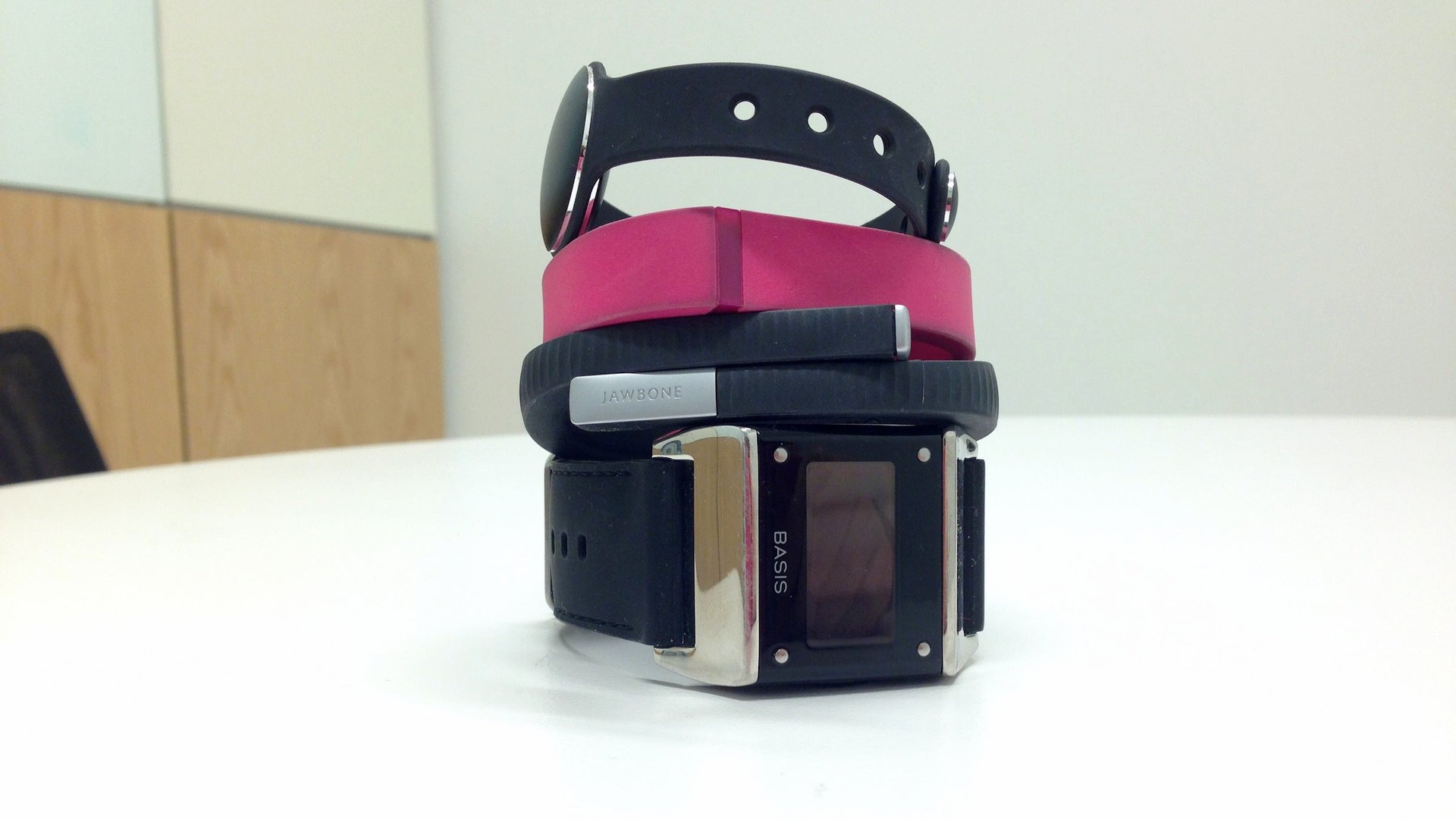

For 10 days last month, I strapped on four fitness trackers for every waking hour—all in the name of science. I wore them to brunch. I wore them on my birthday. I wore them when I got sick and spent a full day in bed. For a week and a half, I was quantified—in quadruplicate.
The premise I was testing is fundamental to the idea of fitness trackers, the liveliest sector of the wearable computer market. Fitness trackers are touted as a wellness tool: something that you’ll want to wear all the time, and that will make your life better and healthier. I wanted to see if they were producing data that could actually help me, and just what I could do with that data.
I expected to hate all of them, but I was wrong. I also expected them to all be sorts of useless—and on that count I was right.
I went with four of the most popular bands: The FitBit Flex ($100) (not the newest model, but the Force has been recalled); the Jawbone UP24 ($150); the Misfit Shine ($120); and the Basis ($200).
What I did
My methodology was fairly straightforward. Every morning I put on all four trackers at once, with the three smaller bands—FitBit, Jawbone, and Shine—on my left wrist, and the larger Basis on my right. The Basis claims to be the most sophisticated, and doesn’t specify which wrist you should wear it on, so I figured we’d be okay. I was, however, prepared to see a higher activity level in the Basis; Since I’m right-handed, I figured that tracker would be moving more. (Though not much more, as I spend my days with both hands planted firmly on a keyboard.)
I took all four bands off at night and in the shower. All are water-resistant, but I was less-than-enthused about sudsing up with so many devices on my arm. They also all provide some form of sleep tracking—but have you ever tried sleeping with four fitness trackers on? I did once, and spent eight hours whacking myself in the face with them.
But other than that, we’re talking full-time tracker-wearing.
[protected-iframe id=”cfa88f530d59823b1a59626ea7eca22b-39587363-50805307″ info=”//instagram.com/p/j5AWnlknjn/embed/” width=”612″ height=”710″ frameborder=”0″ scrolling=”no”]
The data
I was pretty sure that the step counts would be all over the place, and that I’d be left wondering why I hadn’t just used an old-fashioned pedometer instead. In fact, the step counts were surprisingly consistent across devices—even the Basis, worn on my dominant hand, stayed remarkably close when I averaged out the results day-to-day. When we spoke to the ultimate quantifier, Nicholas Felton, about his multiple fitness trackers, he told us that the results were all within “around 10% of each other,” which he considered an acceptable margin. Sometimes I would look down at my various step counts and guffaw at the wide range the devices showed. But once I had the accumulated numbers in front of me, my results were much the same as Felton’s:
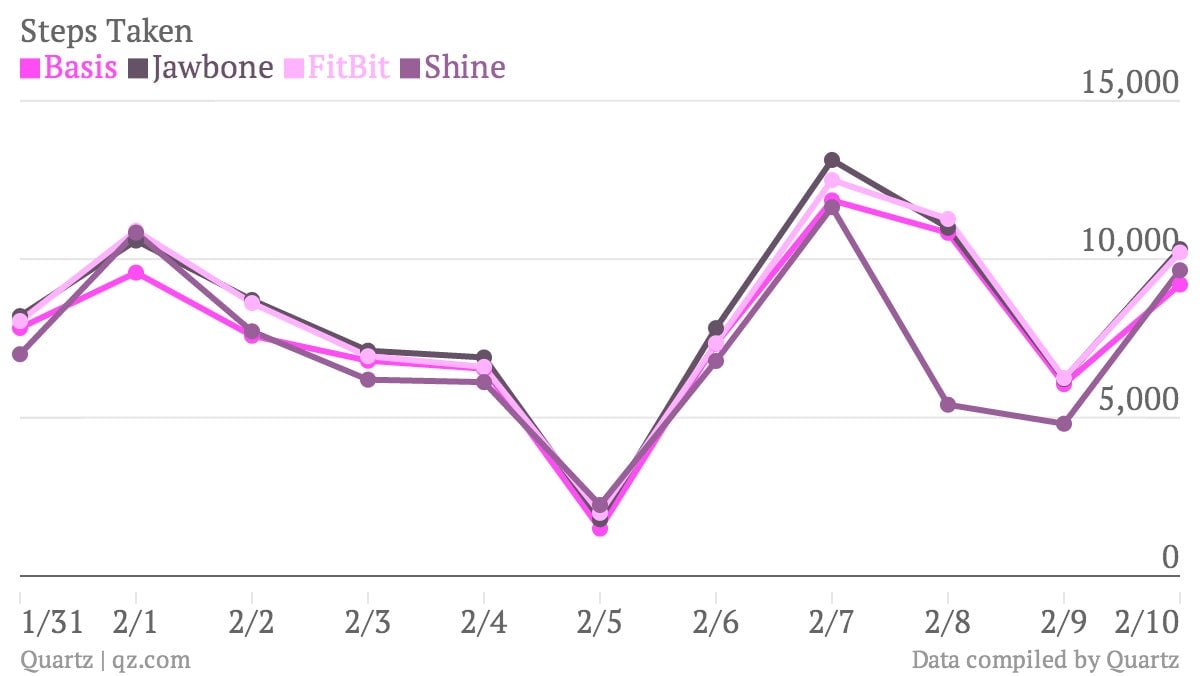
Not every data point worked out so well: Estimated calories burned, for example, were all over the place:
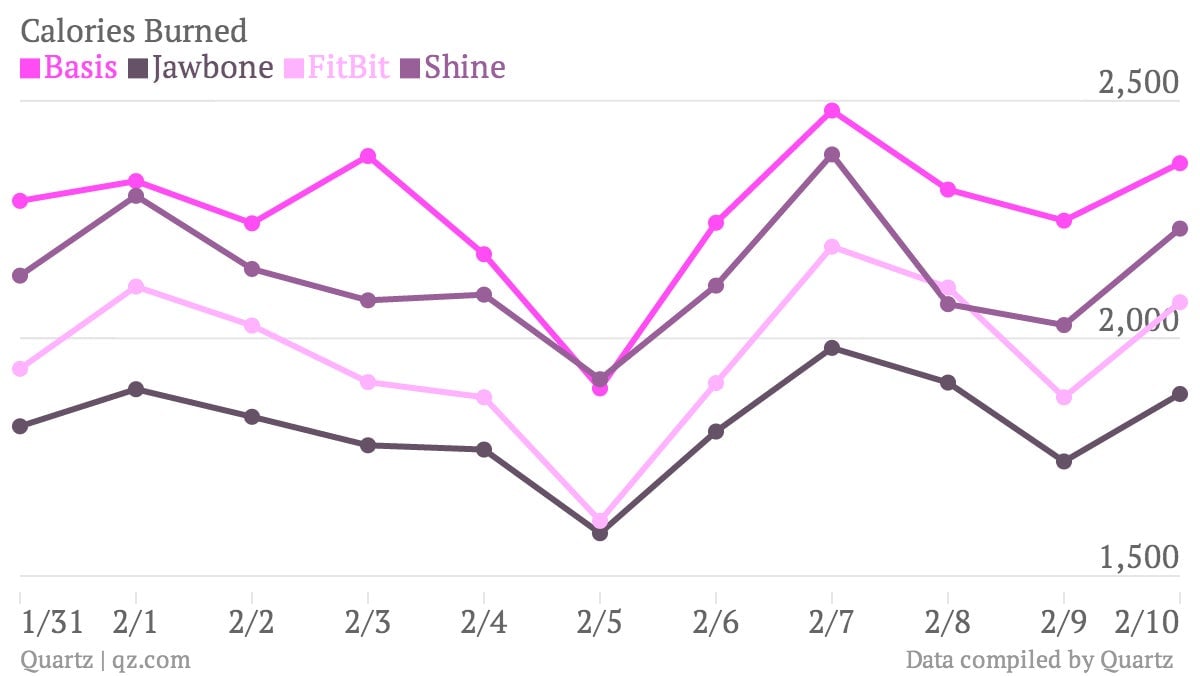
Individual bands were consistent, so they all “worked” within their own logic, based on whatever algorithms they use. But even though each company claims to use cutting-edge technology, the calorie estimates varied from device to device.
Representatives from FitBit, Jawbone, and Misfit confirmed that their bands estimate resting caloric burn—the calories you burn just by sitting around being your bad self—using your height, weight, age and gender. All three use algorithms informed by their accelerometers to estimate active caloric burn, and the FitBit and Jawbone allow you to enter different types of activity to better inform the burn rate. You might move your body as much while walking down a flat road as you do while hiking up a mountain, but the caloric expenditure will be different. Basis CEO Jef Holove told Quartz that his band uses heart rate, body temperature, and sweat level sensors to determine the intensity of your activity automatically, producing what he believes is the most accurate calorie count on the market. With the Basis, the calorie count was so much higher than average, however, that I was left wondering if I’m just especially sweaty.
As WIRED reported in 2012, the only way to get an accurate read on calorie burn is with an indirect calorimeter, which analyzes your oxygen consumption using a face mask and costs between $30,000 and $50,000. On the bright side, the five-pound backpack usually used to carry the equipment will make your workout that much more strenuous.
Bottom line, you can’t treat your fitness tracker’s calorie count as gospel. Like step count, calorie count is really just meant to be a good estimate. But step counts are a great tool for relative improvement; if an average day has a read of 8,000 steps for you, that number doesn’t have to be strictly accurate for you to deduce that increasing that number by half would make you fitter. Bad calorie estimations, on the other hand, could actually derail your fitness plans. If, for example, you’re using your calorie readings as an excuse to eat an extra slice of cake—or as a motivation to deprive yourself of essential sustenance—stop.
Other surprises
In general, I got much more out of the trackers than I thought I would. Wearing them spurred me to be more active throughout the day (insofar as walking to the farthest bathroom stall or a few blocks further for lunch counts as “more active”). Being tracked made me appreciate just how good for me a day running around town could be (check out my weekend spikes!), as well as just how sedentary I am at work. I did my experiment during a cold week, and I got sick partway through, so I was doing less “extra” walking than I usually do. Now I know what a lazy week looks like, and it isn’t too great. That’s useful, even if it’s not an insight I’d have paid more than $100 for.
Which one should you buy?
None of them, in my opinion. For now, the information I got didn’t seem worth the money spent. With costs still fairly high, I feel pretty good about waiting a year or so to see what’s on the market then.
In fact, wearing four fitness trackers just made me want a single wearable to track my fitness and display my email. For me, a device that served only to increase my daily steps slightly wasn’t worth the money, charging time, or wrist real estate. That being said, each device had its pros and cons:

The Misfit Shine has a very cool minimalist design, and could be worn anywhere. You can tap the face of it throughout the day to see your progress, and it serves as a watch as well—albeit a rather abstract one. Plus, you can order a leather band for it to sit in, which certainly classes it up. Another big bonus to the simplified hardware is that the Shine uses a battery that lasts for months, instead of needing a periodic charge.
But with the minimalism of the disc’s design, the accompanying app is fairly bare, too. You see your progress towards your daily goal, without the insights or playful nudging that the other devices offer. The information is there, but it feels less gamified than the FitBit and the Jawbone.
Ultimately, the Shine was actually too simplified for my tastes—it didn’t feel like wearing a smart device. I happen to like my gadgets blinking and vibrating and trying to be my best friend. But maybe that’s just me.

The FitBit was straightforward to use and easy to wear, and it has a great user interface in the app. I was especially a fan of the ease with which one can switch from daily reports to overall insights. It also had a great alert system—it buzzes. I like that user feedback, even if it’s just telling me that I’ve met my goal for the day. Plus, you can set alarms and notifications, and I found that a buzzing on the wrist was a super effective nap wake-up.
But the band (which was pink, for reasons unknown) got dirty very quickly, and started to annoy me after a few days. The little metal clasp used to close the band was particularly irritating, especially in the cold. Interactions with the band could be confusing, too—you tap the device with varying rapidity to communicate with it, and I frequently made it buzz like crazy just by brushing against it. And all those lights and buzzes made FitBit a hungry beast, needing a charge a couple times a week.
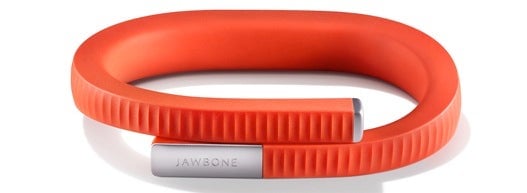
The Jawbone was my favorite overall: It took some getting used to, but the rigid band actually sat better on my wrist than the adjustable straps of the other three. The app was the most fun to use. It felt like a general lifestyle manager, not just a step counter. When you open up the dashboard, everything is there: You can scroll through your daily step summaries ad infinitum, and getting deeper insight into the day is just a tap away.
But as I said, the band did take some getting used to. At first I found the rigidity of it very uncomfortable, and it took a while for me to find the right spot for it to sit on my wrist. One coworker told me that it looked the most like “a fashion statement” of any of the bands, but another told me that he had gone through three Jawbones and broken them all. And although I liked the game-like interface, some may find the app’s features and promptings just a little too “friendly”.
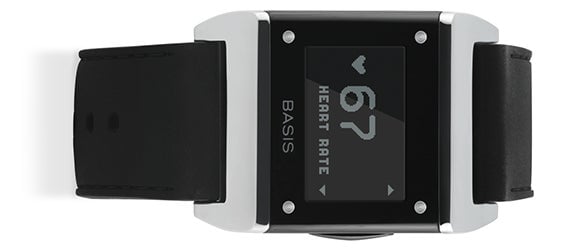
The Basis seems like a solid device, but ultimately was not for me. A watch-like gadget, it offers the most comprehensive data (even recording a spike in body temperature when I was sick), and feels the most workout-centric of all four devices.
But though it provides the most information, the Basis gives minimal guidance. While the Jawbone offered all kinds of quippy suggestions, the Basis was more businesslike. It could sense much that the other bands couldn’t, but that information just became data points to chart. Moreover, the extra sensors (and display) add a lot of extra bulk: The watch face was so large that my wrist got sore. Still, for someone with a larger wrist who’s more serious about their athletics, the Basis could very well be the best choice.